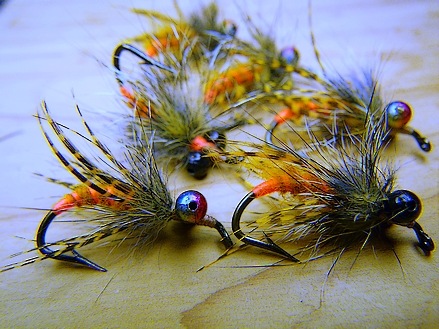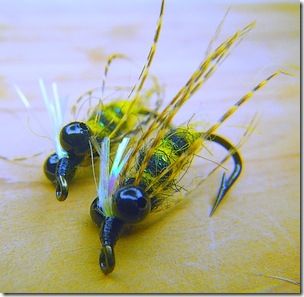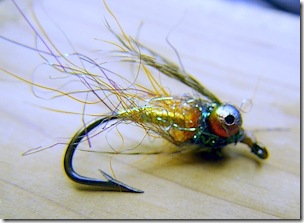It wasn’t so much the Perfect Storm as it was the perfect sunshine – robbing me of any pretense that I could vanish fishing. The American was running nearly double last year’s flows, which gave momentary pause, but the accumulated chores and yard work was running nearly triple normal.
While I blistered those soft pasty fingers on shovels, lawn mowers, and hedge trimmers, I was framing my response to last week’s revelation that Shad ate in fresh water …
Shad eat in fresh water. They just don’t eat enough.
… and with plenty of the bright, cornea-damaging Shad flies from last season, I’m thinking a fistful of drab and semi-natural looking flies might be that changeup needed on some slow mid-morning.
Add a liberal dose of the Czech style of realistic attractor, throw in some of the time honored Shad colors, and it ought to please the fish and may even lure some half-pounders into biting. All I needed was less blisters on my tying fingers, less water spilling over Folsom Dam, and a smattering of vacation to test all these unknowns.
Locate the fish using traditional patterns and then add a dropper with the experimentals and see whether it’s the semi-attractor or the eyeball wrenching Pink that becomes the preferred fly.
The opportunistic nature of feeding explains why the Shad has a yen for anything bright flung in its direction. Just like small trout rush out to smack the fly first, a large school of Shad probably behaves identically, only with greater urgency – as each fish is competing with 100,000 of its brethren and knows it will fall prey to another if not eaten immediately.
… and if I’d spent most of my existence seining plankton in 300 feet of water, how the hell would I know what freshwater chow looks and acts like?
See it, eat it, or spit it out.

The hard part is marrying the attributes of tiny nymphs to a much larger Shad hook. While the native waters are host to all manner of small fish, and the occasional Hexagenia mayfly, it’s a limited palette. I opted to err on the side of voracious hunger, figuring “buggy” was all that is really needed.
 The Underwear River Caddis marries the soft hackle and fur collar to traditional shad orange, it’s an homage to classic shad colors with a bit of trout food chaser.
The Underwear River Caddis marries the soft hackle and fur collar to traditional shad orange, it’s an homage to classic shad colors with a bit of trout food chaser.
All are tied on ancient Mustad iron, a 3116A size 7, (2 extra strong, 2X short, Limerick bend). The odd size is exactly between the sizes I fish most – #6, and #8’s, which makes a nice intermediary hook with the properties of both.
All the reports featuring terrestrials allowed me to dust off the old traditional attractors. We’ve added opalescent wing stubs and soft hackle to the classic McGinty, hoping the bright mix of yellow and black might give something a serious mad …
 … and for the minnow crowd we assumed a bit of shiny mixed with a lean silhouette would cover all the possible fry that might stumble into a pod of ravenous herring.
… and for the minnow crowd we assumed a bit of shiny mixed with a lean silhouette would cover all the possible fry that might stumble into a pod of ravenous herring.
The Eastern Bloc featured at right, is a marriage of classic Czech colors with the traditional Shad wet fly. It’ll slim down to a nice minnow shape and features enough dyed black Angelina to offer plenty of eye-catching sparkle.
The other dozen patterns I’ll hold until we start the research in earnest, which will be shortly after the shovel blisters recede and expose the Lilly-white paper pushing flesh beneath.
Precious fly tier’s fingers, don’t mess with ‘em …
Tags: American River, shad flies, Czech Nymphs, Wet Flies, limerick bend, Mustad fly hooks, McGinty, fly fishing blog, soft hackle, fly tying

I like the look of these shad flies. The flies we fish are very different in design but effective. Our run here on the Delaware River here in the Northeast is winding down, but I am going to tie up some these patterns and give them if I can still find some fish. I look forward to seeing some of your other patterns.
Those nymphs begin to approach art! I always assumed that the shad behaved in irritation around bright color or shiney reflectors. A Bass like response to small irritations that dare to swim to close. You have my full attention.
Those flies look great. Hope they work! Hope to get fishing with you one of these days too.
Those nymphs begin to approach art! I always assumed that the shad behaved in irritation around bright color or shiney reflectors. A Bass like response to small irritations that dare to swim to close. You have my full attention.